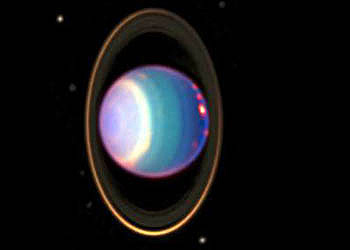

|
Документ взят из кэша поисковой машины. Адрес
оригинального документа
: http://www.stsci.edu/~inr/thisweek1/2010/thisweek235.html
Дата изменения: Fri Sep 10 18:27:02 2010 Дата индексирования: Mon Sep 13 07:20:49 2010 Кодировка: Поисковые слова: arp 220 |


| Program Number | Principal Investigator | Program Title |
|---|---|---|
| 11604 | David J. Axon, Rochester Institute of Technology | The Nuclear Structure of OH Megamaser Galaxies |
| 11613 | Roelof S. de Jong, Astrophysikalisches Institut Potsdam | GHOSTS: Stellar Outskirts of Massive Spiral Galaxies |
| 11616 | Gregory J. Herczeg, Max-Planck-Institut fur extraterrestrische Physik | The Disks, Accretion, and Outflows {DAO} of T Tau stars |
| 11630 | Kathy Rages, SETI Institute | Monitoring Active Atmospheres on Uranus and Neptune |
| 11638 | Charles C Steidel, California Institute of Technology | Illuminating the HI Structure of a Proto-cluster Region at z=2.84 |
| 11664 | Thomas M. Brown, Space Telescope Science Institute | The WFC3 Galactic Bulge Treasury Program: Populations, Formation History, and Planets |
| 11670 | Peter Garnavich, University of Notre Dame | The Host Environments of Type Ia Supernovae in the SDSS Survey |
| 11694 | David R. Law, University of California - Los Angeles | Mapping the Interaction between High-Redshift Galaxies and the Intergalactic Environment |
| 11707 | Kailash Sahu, Space Telescope Science Institute | Detecting Isolated Black Holes through Astrometric Microlensing |
| 11708 | Morten Andersen, European Space Agency - ESTEC | Determining the Sub-stellar IMF in the Most Massive Young Milky Way Cluster, Westerlund 1 |
| 11721 | Richard S. Ellis, California Institute of Technology | Verifying the Utility of Type Ia Supernovae as Cosmological Probes: Evolution and Dispersion in the Ultraviolet Spectra |
| 11734 | Andrew J. Levan, The University of Warwick | The hosts of high redshift gamma-ray bursts |
| 11737 | David M. Meyer, Northwestern University | The Distance Dependence of the Interstellar N/O Abundance Ratio: A Gould Belt Influence? |
| 11738 | George K. Miley, Universiteit Leiden | SPIDERWEBS AND FLIES: OBSERVING MASSIVE GALAXY FORMATION IN ACTION |
| 12042 | James C. Green, University of Colorado at Boulder | COS-GTO: Pluto |
| 12179 | Jean-Claude Bouret, CNRS, Laboratoire d'Astrophysique de Marseille | The Stellar Winds of Evolved, Braked O-Type Magnetic Oblique Rotators |
| 12331 | C. S. Kochanek, The Ohio State University | Massive Star CSI: Has The Progenitor of SN2008S Vanished? |
GO 11630 Monitoring active Atmospheres on Uranus and Neptune
 Nicmos image of aurorae on Uranus
Nicmos image of aurorae on Uranus
|
The atmospheres of the gas giant planets in the solar system are dynamic entities that can exhibit dramatic changes over a variety of timescales. Those changes are most apparent in Jovian atmosphere, which displays a wide variety of bands and spots, reflecting complex meteorological phenomena (see, e.g., previous ACS observations of the upper atmosphere and of the new little red spot ). This is not surprising since Jupiter atmosphere receives the highest input of solar energy. However, secular variations are also evident in the atmospheres of the outer planets, albeit usually at a more subtle level. The present program builds on past HST programs (see Program GO 10534 ) that have monitored atmospheric changes in the two outermost gas giants, Uranus and Neptune. Both exhibit long-term seasonal variations, whose origins are not yet well understood; both are capable of generating dark spots - phenomena that are presumably related to Jupiter's Great Red Spot and Saturn's Great White Spot. The present observations use a variety of filters on Wide-Field Camera 3 (notably the quad methane filter) to probe conditions are a variety of levels within the planetary atmospheres. |
GO 11707: Detecting Isolated Black Holes through Astrometric Microlensing
GO 11721: Verifying the Utility of Type Ia Supernovae as Cosmological Probes: Evolution and Dispersion in the Ultraviolet Spectra
GO 12331: Massive Star CSI: Has The Progenitor of SN2008S Vanished?